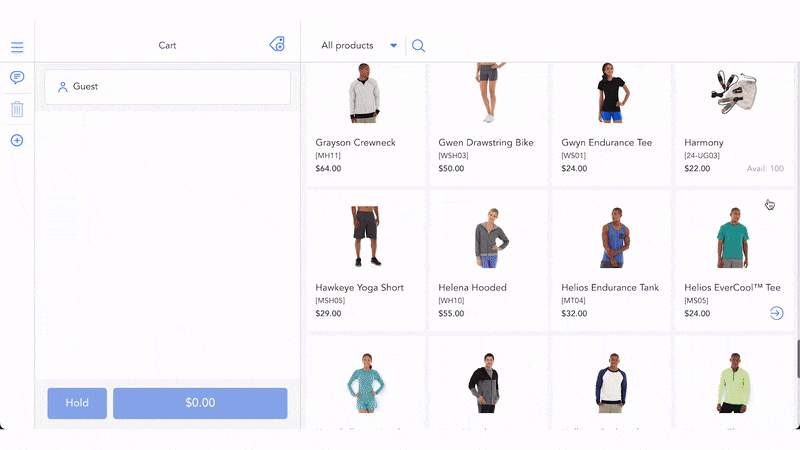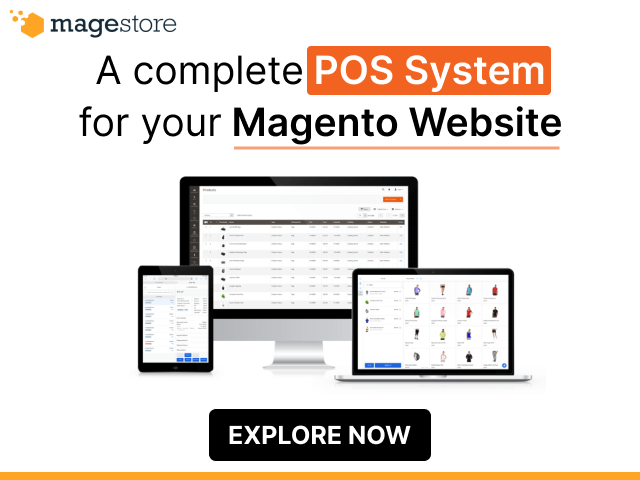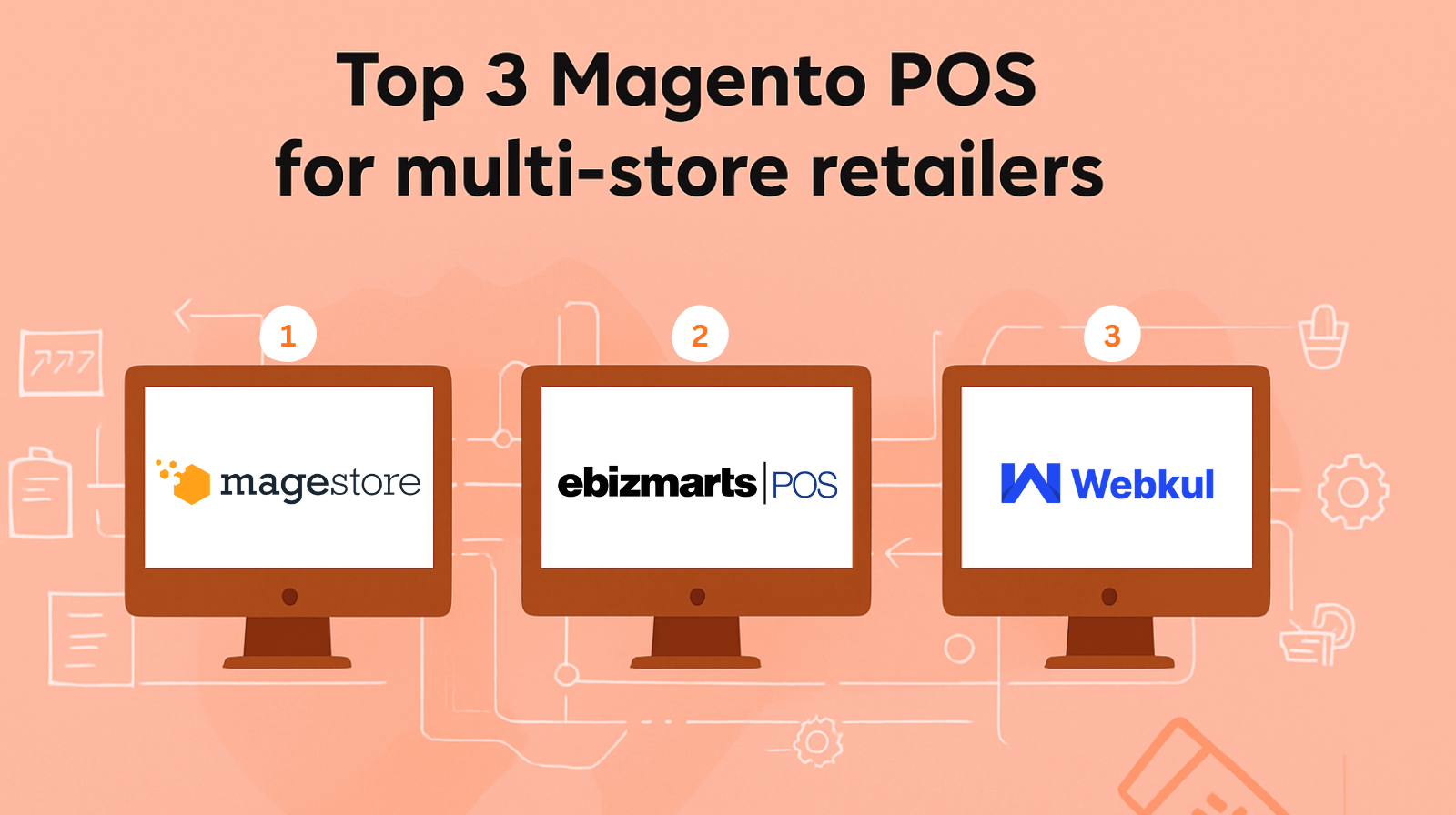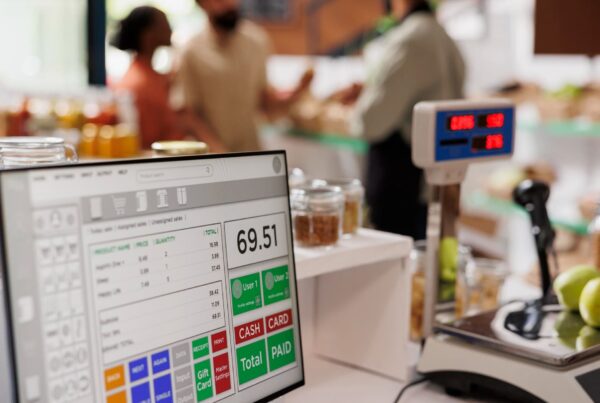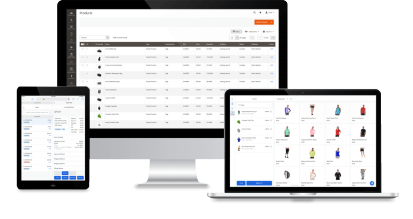Magento POS integration is the process of connecting your POS system at physical stores with the Magento eCommerce platform. If the point of sale seamlessly integrates with Magento, you’ll have real-time and accurate business data for confident decision-making. On the other hand, if the POS fails to share data with Magento, you face significant sync challenges, including mismatched inventory, duplicate customer records, and slow operations.
In this article, we’ll explicitly explain the definition of Magento POS integration, its benefits, integration approaches, common challenges, and expert tips for a smooth connection. Let’s read on for in-depth insights.
- Key takeaway
- What is Magento POS integration?
- Key benefits of Magento POS integration
- How to integrate a POS system with Magento?
- 5 practical tips to improve Magento POS integration
- Common challenges and considerations
- How to choose the right Magento POS solution?
- Examples of POS systems integrated with Magento
- How to get started with Magento POS integration
Key takeaway
- Magento POS integration means connecting your Magento platform with a retail point of sale system to share and sync data between the two. A proper integration enables real-time inventory updates, unified shopping experiences, smoother operations, and live reports for data-driven decisions.
- Retailers can either use a Magento-native POS that connects directly with Magento or rely on a connector or middleware to integrate a standalone POS. To ensure smooth integration, best practices include centralizing data between Magento and the POS, running regular system audits, and monitoring sync accuracy.
- Common integration challenges include maintaining real-time data sync, dealing with connector-related issues, and ongoing maintenance.
- Scalability is also a crucial but often overlooked factor when evaluating POS solutions.
- Examples of Magento-native POS include Magestore POS and Magefan POS, while standalone POS options include Square POS, Lightspeed POS, and Clover POS.
What is Magento POS integration?
Magento 2 POS integration is the action of connecting a POS system with Magento for transferring and keeping business data, such as inventory, sales, and customers, consistent and up-to-date across all sales channels. Take a look at a quick summary of the differences between with and without integration below.
No integration | With integration |
|
|
|
|
|
|
Key benefits of Magento POS integration
POS integration in Magento is more than convenience. It’s about creating a unified retail system with high efficiency that benefits both you and your customers. Here are the key advantages of this system integration.
1. Keep inventory accurate in real time
Immediate inventory sync is the most pivotal and prominent benefit of connecting a retail POS with Magento. Your stock data will be updated automatically and more accurately, minimizing the risk of overselling and underselling. Your customers can easily see what’s in stock, whether they shop online or in-store.
2. Deliver a unified customer experience
When customer information is centralized in one place, you can build a consistent shopping experience where your shoppers earn points from in-store purchases and can redeem them online, or vice versa. This boosts their loyalty to your brand and increases repeat purchases.
3. Streamline operations and save time
Connecting your POS with Magento helps data automatically transfer between systems, reducing manual data entry of orders and stock adjustments, freeing your staff from tedious tasks, and letting them focus on serving your customers.
4. Improve reporting and decisions
Thanks to real-time data across all sales channels, you’ll see what best-selling or under-selling products are, when to replenish items, and how your promotion campaigns are performing. With data-driven and granular reports, you’ll make confident decisions instead of guesswork.
How to integrate a POS system with Magento?
There are several approaches to achieving the best POS for Magento integration when it comes to data sharing and synchronization. We’ll discuss each method in detail below.
1. Use a Magento-native POS for a direct connection between POS and Magento, no middleware needed
A Magento-native POS, like Magestore POS and Magefan POS, which is designed specifically for Magento and follows Magento’s rules, will directly connect with the Magento database for data transfer without middleware or 3rd-party connectors.
- Advantages:
- Provide real-time and accurate data sync
- Eliminate the need for external connectors and maintenance fees to keep the connectors compatible with updates from Magento and the POS software
- Maintain a stable performance
- Some POS systems offer high scalability, allowing retailers to add unlimited locations, users, and devices without paying more.
- Best for: A Magento-native POS is the go-to solution for Magento retailers who want the smoothest integration in their retail system.
2. Use an integration solution to link a standalone POS with Magento
Standalone POS, such as Square or Lightspeed POS, don’t have a direct connection with the Magento eCommerce platform. There are 3 popular methods to connect these systems for data transfer: You may use either a connector, an integration platform as a service (iPaaS) like Zapier, or custom APIs.
Option 1: Connectors:
Some standalone POS providers provide pre-built connectors to connect with Magento using standardized protocols. The connector transfers data, such as inventory, orders, sales, and customers, between the POS and Magento for data consistency.
For example, Square POS users can use the Square extension for Magento 2 to couple different Square products, such as Square POS and Square Payments, with Magento. Lightspeed POS users often use SKUPlugs to transfer data between the POS and Magento.
Option 2: iPaaS:
iPaaS solutions offer pre-set rules and business logics for you to develop data sharing flows to your needs. You can map the built-in triggers with actions to transfer inventory, customers, and sales data between a standalone POS and Magento.
The critical difference between an iPaaS and a connector is that an iPaaS can transfer data between various systems rather than from one dedicated system to another. Thus, if you want to connect different software, like linking a POS with an eCommerce platform or a POS with an ERP, an iPaaS is a more optimal choice.
For non-tech-savvy retailers, we recommend using connectors or iPaaS for system integration with no or low code, as they’ll save you time and development and maintenance efforts.
Option 3: Custom APIs:
Besides using pre-built connectors or iPaaS, depending on your specific business needs, you can develop custom workflows using APIs to create a bridge for syncing data between a standalone POS with Magento. However, this method takes a lot of time and money to build a custom integrator from scratch.
With over 15 years of experience, our Magento experts often recommend choosing a customizable connector to match the two software, then tailoring the connector to your changing business needs later.
Some notable benefits and drawbacks of using a connector to align a standalone POS with Magento are as follows.
- Advantages:
- Lower upfront cost because of using the existing POS software
- Allow using existing POS hardware that often comes with proprietary POS, like Square POS
- Limitations:
- Cause sync delays and errors sometimes
- You may incur a higher total cost of ownership because the costs for a workable POS system include the standalone POS license, the integrator, and the ongoing maintenance costs for the integration solution.
- When sync issues occur, you’ll have to refer to various contact points for troubleshooting and resolution.
For specific use cases of Magento and POS integration, keep reading our articles below:
5 practical tips to improve Magento POS integration for retailers
The retail world is turning to omnichannel for a seamless shopping experience. However, delivering an omnichannel experience is no easy feat as it requires a tight connection between eCommerce and POS systems. If you’re looking for best practices to integrate your eCommerce site and POS, check out five tips for Magento and POS integration from Magestore’s experts.
1. Centralize all your data
Magento POS integration brings data in one place. From there, you can access, update orders, purchases, or customer data, and save time and cost on data collection with a centralized database.
2. Make POS the backbone of a cohesive shopping experience
In-store experience is still powerful in the digital age, but customers now expect it to connect with online shopping. A well-integrated Magento POS allows you to sync customers, orders, and product data in real time across channels, thus your customers can enjoy a consistent loyalty program and stock availability.
3. Reduce manual work and errors for store staff
Cashiers, warehouse teams, and managers engage the most with your POS system. Therefore, a well-functioning eCommerce and POS integration system will help reduce manual work, double entry, and save your staff time and costs. Think of them as key stakeholders in our integration plan.
4. Plan with your business vision in mind
Imagine what your company will look like in six months, one year, or five. Don’t just solve the problems for today. Choose a Magento POS that will scale with new stores, more products, and future fulfillment models.
5. Evaluate and evolve your system regularly
If your current Magento or POS is not working out, be open to new solutions. Switching systems can be daunting and time-consuming at first, but a well-functioning POS system will help leverage your business performance and efficiency.
We’ve curated 2 articles with insights from our Senior Product Managers, who each have over 10 years of experience working closely with Magento retailers. Their practical knowledge can help you anticipate the risks of changing systems and prepare for them effectively.
Common challenges and considerations when integrating Magento with your POS
Integrating POS with the Magento platform brings more benefits than harm. However, you should consider these vital challenges for a smooth connection.
Data sync issues
The most critical issue of POS and eCommerce integration is the data sync. If sync isn’t in real time and accurate, your staff and customers may encounter problems like overselling, double-selling, or inventory not reflecting accurately.
Connector dependency
Many POS systems for Magento, especially standalone POS, require connectors or middleware to match POS data with Magento. These add complexity to your retail system, create potential failure points, such as data mismatches and inaccuracies, and often carry extra licensing fees for the integrator.
High costs
Custom API integrations or 3rd-party connectors can be expensive, especially with ongoing updates and maintenance to keep up with the updates from the Magento platform and the POS. You’ll have more software to keep a close tab on, including your Magento site, POS software, and the integration software.
IT maintenance
Non-native POS solutions often require in-house IT or external developers to keep the system running smoothly. You’ll incur more operational costs for hiring IT staff to take care of your system.
How to choose the right Magento POS solution for your business?
There’s no one-size-fits-all solution. The best POS for Magento integration depends on your business size, budget, and long-term strategy. Here are the most pivotal criteria for you to compare and shortlist POS options.
Sync performance
Whether you choose a Magento-native POS for a direct link with Magento or a standalone POS and a connector to unify with Magento, you should check and test the sync performance thoroughly. Refer to our self-check questions to shortlist the top POS with the best sync capacity.
- Does the sync occur in real time or intervals?
- What business data can the Magento-native POS or the connector sync?
- Is the shared data accurate between systems?
Business size and growth plans
- Small retailers may accept connector-based systems for short-term needs as they can utilize their existing systems and save some money.
- Growing Magento retailers with multiple stores benefit from a Magento-native POS to avoid sync problems.
Budget and maintenance
- Native POS solutions often cost less to maintain in the long run, especially with one-time license POS systems.
- Connectors, iPaaS, or custom APIs may require hidden costs, such as IT staff, license fees, and updates.
Key features
The features to look for in a POS for Magento 2 depend on your business needs and budget. However, if you need omnichannel loyalty, multi-location management, or real-time inventory, a native POS is the safer choice. Check out the feature list for a Magento POS below:
- Real-time sync of products, orders, and customers
- Multi-store and multi-location support for retailers with multiple outlets
- Inventory management across warehouses and storefronts
- Omnichannel loyalty programs that work both online and offline
- Flexible payments, including debit, credit, gift cards, contactless, split payments, and buy now pay later
- Hardware compatibility with common POS devices and peripherals
- Offline mode to process sales even when the internet goes down
- Scalability to add new stores, users, and products without major costs
- 3rd-party integrations with ERP, accounting, marketplaces, and shipping platforms
Hardware environment
- Vendor lock-in: Some POS systems only run on their proprietary hardware, such as Square POS and Clover POS. Pay attention to this point when weighing your POS options.
- Magento-native systems like Magestore POS work with common PCs, iPads, tablets, and standard POS peripherals.
Scalability
- If you plan to add more stores, registers, or staff, ensure the POS can expand without extra fees for new locations, devices, and users.
- Our business consultants often advise retailers to focus on the features they need for the first 1–2 years of operation, then add more functions as their needs evolve. This approach helps reduce upfront costs. You don’t need an overly powerful POS from the start, but a reliable, scalable, and customizable solution that can support your future growth.
Examples of POS systems integrated with Magento
There are 2 main types of POS for Magento: Magento-native POS solutions and standalone POS systems. The distinction lies in how each connects with the Magento eCommerce platform. Below, we’ll examine the leading providers in each category.
1. Magento-native POS solutions
- Magestore POS: Magestore Magento 2 POS is a Magento-native point of sale system that directly integrates with Magento for real-time sync of inventory, sales, and customer data, without 3rd-party connectors or middleware. The POS processes checkouts in seconds, supports omnichannel features such as multi-channel and multi-location management, loyalty, and fulfillment. It’s compatible with PCs, tablets, iPads, and common POS peripherals. Magestore POS allows retailers to add new locations, products, users, and devices without extra fees.
- Magefan POS: Magefan is another Magento-native POS that’s worth considering. It offers sufficient features for retail businesses to manage their online and offline operations.
- Webkul POS: Webkul provides 2 versions of POS for Magento, one is a web-based POS and the other is a POS app. Both POS versions bring essential features from order checkout to basic inventory management. However, users of Webkul POS often complain about its unstable performance and feature limitations.
2. Connector-based POS solutions
- Square POS: Square POS is a cloud-based software, popular for small businesses. It integrates with Magento via 3rd-party extensions. Started as a payment facilitator, Square has expanded into a full retail ecosystem, offering POS hardware, software, and payment services.
- Lightspeed POS: Similar to Square POS, Lightspeed POS also requires connectors to connect with Magento. Some merchants often report sync or customization challenges with the POS. Lightspeed also ties its system to Lightspeed Payments, charging up to $400 per month or a percentage of transactions if you use another payment provider.
- Clover POS: Clover POS also needs 3rd-party apps to link with Magento and is limited in Magento-specific features.
Read more to compare these POS solutions and choose the best fit for your business:
How to get started with Magento POS integration
For retailers considering integration, here’s a step-by-step approach to kick-start your planning and execution:
1. Assess your business needs
- Check the number of stores, registers, and staff for the POS usage
- Consider what channels to connect with the POS: Magento and online marketplaces
- Review must-have features, including loyalty, reporting, inventory, and fulfillment
2. Choose an integration method
- Direct integration: A native Magento POS requires no middleware or 3rd-party connectors to link with Magento. We highly recommend this way for long-term stability.
- Indirect integration: This method is for connecting a standalone POS, such as Square POS, Clover POS, with Magento. You can either integrate systems using a connector, an iPaaS, or custom APIs.
3. Test sync accuracy
- Verify that orders, inventory, and customer data sync properly
- Run test transactions across both online and offline channels
4. Train your staff
- Ensure staff understand how to use the POS and troubleshoot basic issues
5. Monitor and optimize
- Track performance over time
- Adjust features or integrations as business needs change
FAQs about Magento POS integration
1. Does Magento have a built-in POS?
No, Magento does not offer a built-in POS. Thus, retailers need to integrate a POS system with Magento to sync data for managing online and offline operations. You can refer to the part, How to choose the right Magento POS solution, for more information.
2. What is a Magento-native POS?
A Magento-native POS is built specifically for Magento, designed to sync directly with its database without connectors or middleware.
3. How long does integration take?
With a Magento-native POS, setup and implementation can be completed quickly since no connectors are required. Connector-based or custom integrations can take weeks or months, depending on complexity.
4. What costs are involved in the integration?
Costs vary by approach:
- For direct integration: You only pay for the POS license.
- For indirect integration between a standalone POS and Magento, you’ll need to pay for the POS license and the integration solution.
Final words
Magento integration with POS system helps retailers unify online and offline operations. Without it, merchants may risk inventory errors, fragmented customer data, and operational inefficiencies.
There are multiple approaches, but the most reliable is using a Magento-native POS that connects directly to Magento without middleware for real-time and accurate data sync.
For Magento retailers planning to scale, integrating POS with Magento isn’t just an option, but a necessity. We hope that our article gives you all the necessary information to plan and execute your Magento and POS integration.
For practical support or specific consultation with your business situation, let’s talk with our Magento experts.

